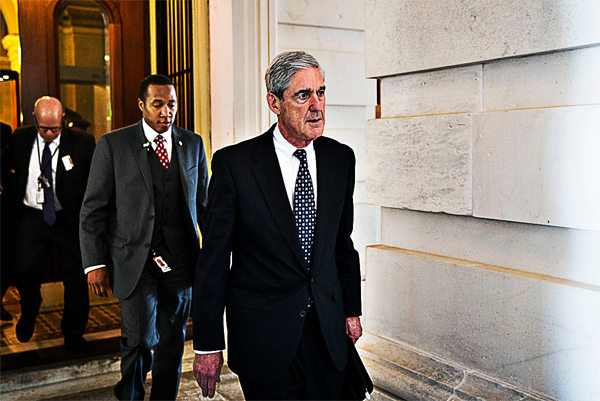
Obama Administration Scandals: Robert Mueller delivers report on the Russian government's influence in the 2016 United States presidential election of Donald Trump on March 22, 2019
Robert Mueller delivers report on the Russian government's influence in the 2016 United States presidential election of Donald Trump: On March 22, 2019, The Mueller Report, officially titled Report on the Investigation into Russian Interference in the 2016 Presidential Election, is submitted to Attorney General William Barr.
The Mueller Report, is the official report documenting the findings and conclusions of former Special Counsel Robert Mueller's investigation into Russian efforts to interfere in the 2016 United States presidential election, allegations of conspiracy or coordination between Donald Trump's presidential campaign and Russia, and allegations of obstruction of justice. a redacted version of the 448-page report was publicly released by the Department of Justice (DOJ) on April 18, 2019. It is divided into two volumes.
Volume I of the report concludes that the investigation did not find sufficient evidence that the campaign “coordinated or conspired with the Russian government in its election-interference activities”. Investigators ultimately had an incomplete picture of what happened due to communications that were encrypted, deleted, or not saved and due to testimony that was false, incomplete, or declined.
However, the report states that Russian interference in the 2016 presidential election was illegal and occurred “in sweeping and systematic fashion” but was welcomed by the Trump campaign as it expected to benefit from such efforts. It also identifies links between Trump campaign officials and individuals with ties to the Russian government, about which several persons connected to the campaign made false statements and obstructed investigations. Mueller later stated that his investigation's conclusion on Russian interference “deserves the attention of every American”.
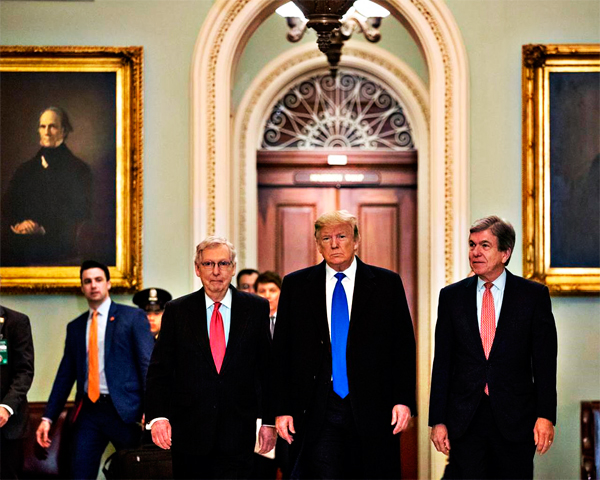
Volume II of the report addresses obstruction of justice. The investigation intentionally took an approach that could not result in a judgment that Trump committed a crime, abiding by an Office of Legal Counsel (OLC) opinion that a sitting president is immune from criminal prosecution, fearing that charges would affect Trump's governing and preempt impeachment and feeling that it would be unfair to accuse Trump of a crime without charges or a trial.
As such, the investigation “does not conclude that the President committed a crime”; however, “it also does not exonerate him”, with investigators not confident of Trump's innocence. The report describes ten episodes where Trump may have obstructed justice while president and one before he was elected, noting that he privately tried to “control the investigation”. The report further states that Congress can decide whether Trump obstructed justice and take action accordingly, referencing impeachment.
Justice.gov / Wikipedia / Just Security.org
The Federalist /
Obama Administration Scandals: Robert Mueller delivers report on the Russian government's influence in the 2016 United States presidential election of Donald Trump on March 22, 2019 (YouTube) 
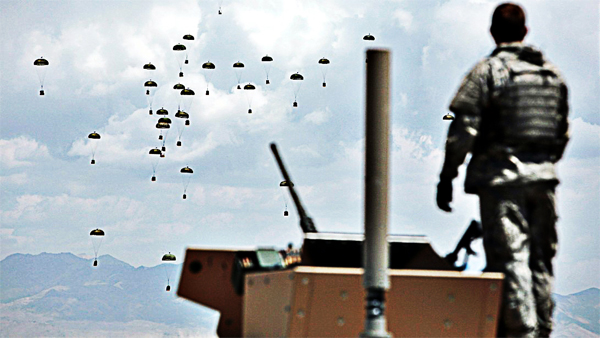
U.S.-led attack on Afghanistan on March 01, 2002
U.S.-led attack on Afghanistan: On October 7, 2001, a U.S.-led coalition begins attacks on Taliban-controlled Afghanistan with an intense bombing campaign by American and British forces. Logistical support was provided by other nations including France, Germany, Australia and Canada and, later, troops were provided by the anti-Taliban Northern Alliance rebels. The invasion of Afghanistan was the opening salvo in the United States “war on terrorism” and a response to the September 11, 2001, terrorist attacks on New York and Washington, D.C.
Dubbed “Operation Enduring Freedom” in U.S. military parlance, the invasion of Afghanistan was intended to target terrorist mastermind Osama bin Laden’s al-Qaida organization, which was based in the country, as well as the extreme fundamentalist Taliban government that had ruled most of the country since 1996 and supported and protected al-Qaida. The Taliban, which had imposed its extremist version of Islam on the entire country, also perpetrated countless human rights abuses against its people, especially women, girls and ethnic Hazaras. During their rule, large numbers of Afghans lived in utter poverty, and as many as 4 million Afghans are thought to have suffered from starvation.
In the weeks prior to the invasion, both the United States and the U.N. Security Council had demanded that the Taliban turn over Osama bin Laden for prosecution. After deeming the Taliban’s counteroffers unsatisfactory - among them to try bin Laden in an Islamic court - the invasion began with an aerial bombardment of Taliban and al-Qaida installations in Kabul, Kandahar, Jalalabad, Konduz and Mazar-e-Sharif. Other coalition planes flew in airdrops of humanitarian supplies for Afghan civilians. The Taliban called the actions “an attack on Islam”. In a taped statement released to the Arabic al-Jazeera television network, Osama bin Laden called for a war against the entire non-Muslim world.
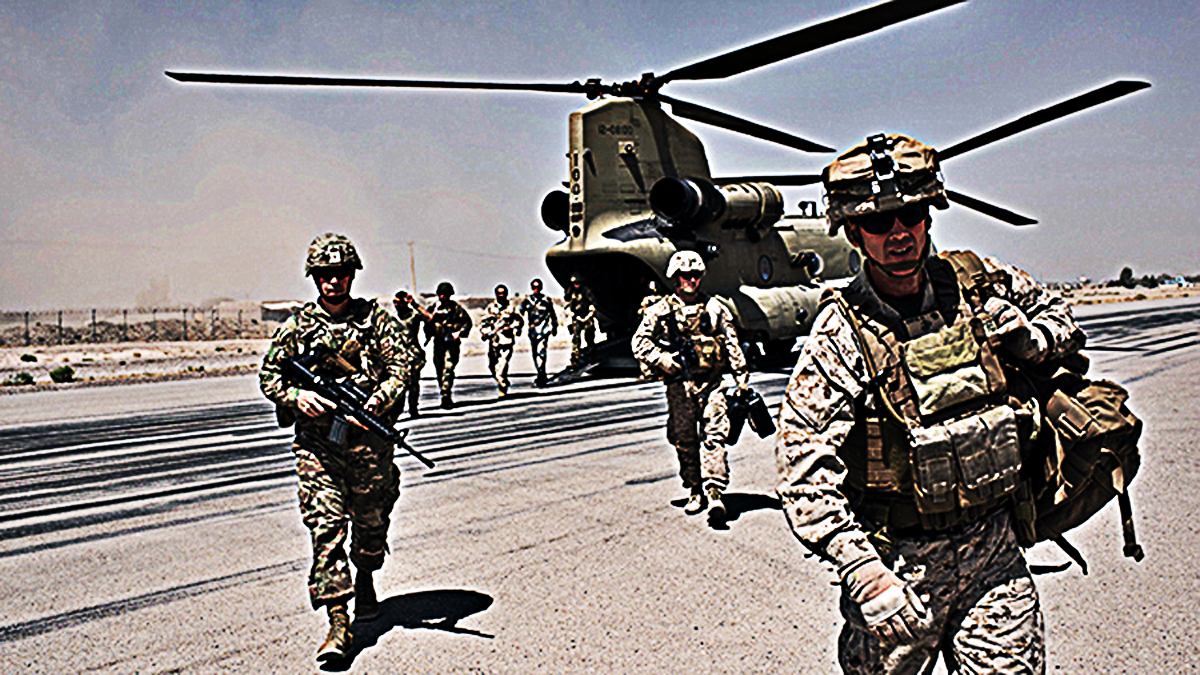
After the air campaign softened Taliban defenses, the coalition began a ground invasion, with Northern Alliance forces providing most of the troops and the U.S. and other nations giving air and ground support. On November 12, a little over a month after the military action began, Taliban officials and their forces retreated from the capital of Kabul.
By early December, Kandahar, the last Taliban stronghold, had fallen and Taliban leader Mullah Mohammed Omar went into hiding rather than surrender. Al-Qaida fighters continued to hide out in Afghanistan’s mountainous Tora Bora region, where they were engaged by anti-Taliban Afghan forces, backed by U.S. Special Forces troops. Al-Qaida soon initiated a truce, which is now believed to have been a ploy to allow Osama bin Laden and other key al-Qaida members time to escape into neighboring Pakistan. By mid-December, the bunker and cave complex used by al-Qaida at Tora Bora had been captured, but there was no sign of bin Laden.
After Tora Bora, a grand council of Afghan tribal leaders and former exiles was convened under the leadership of Hamid Karzai, who first served as interim leader before becoming the first democratically elected president of Afghanistan on December 7, 2004. Even as Afghanistan began to take the first steps toward democracy, however, with more than 10,000 U.S. troops in country, al-Qaida and Taliban forces began to regroup in the mountainous border region between Afghanistan and Pakistan. They continue to engage U.S. and Afghan troops in guerilla-style warfare and have also been responsible for the deaths of elected government officials and aid workers and the kidnapping of foreigners.
Hundreds of American and coalition soldiers and thousands of Afghans have been killed and wounded in the fighting.
History Channel / Wikipedia / Encyclopedia Britannica / New World Encyclopedia.org /
ARMY.mil / Airforce Magzine / NAVY.mil / Rand.org / Media.Defense.gov /
CFE.org / Global Security.org /
U.S.-led attack on Afghanistan on March 01, 2002 (YouTube) 
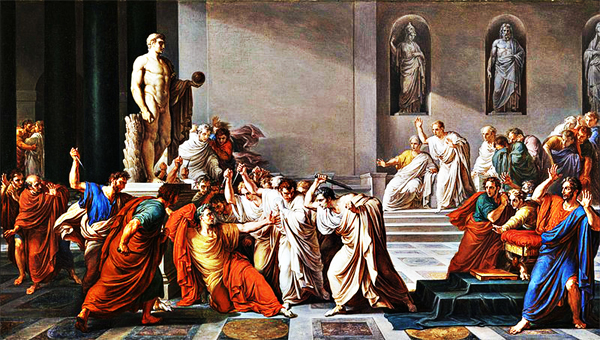
The Ides of March - Assassination of Julius Caesar on March 15, 44 BC
The Ides of March - Assassination of Julius Caesar: On this day Julius Caesar, dictator of Rome, is stabbed to death in the Roman Senate house by 60 conspirators led by Marcus Junius Brutus and Gaius Cassius Longinus. The day later become known as the “Ides of March”.
Caesar, born into the Julii, an ancient but not particularly distinguished Roman aristocratic family, began his political career in 78 B.C. as a prosecutor for the anti-patrician Popular Party. He won influence in the party for his reformist ideas and oratorical skills, and aided Roman imperial efforts by raising a private army to combat the king of Pontus in 74 B.C. He was an ally of Pompey, the recognized head of the Popular Party, and essentially took over this position after Pompey left Rome in 67 B.C. to become commander of Roman forces in the east.
In 63 B.C., Caesar was elected pontifex maximus, or “high priest”, allegedly by heavy bribes. Two years later, he was made governor of Farther Spain and in 60 B.C. returned to Rome, ambitious for the office of consul. The consulship, essentially the highest office in the Roman Republic, was shared by two politicians on an annual basis. Consuls commanded the army, presided over the Senate and executed its decrees, and represented the state in foreign affairs. Caesar formed a political alliance–the so-called First Triumvirate–with Pompey and Marcus Licinius Crassus, the wealthiest man in Rome, and in 59 B.C. was elected consul. Although generally opposed by the majority of the Roman Senate, Caesar’s land reforms won him popularity with many Romans.
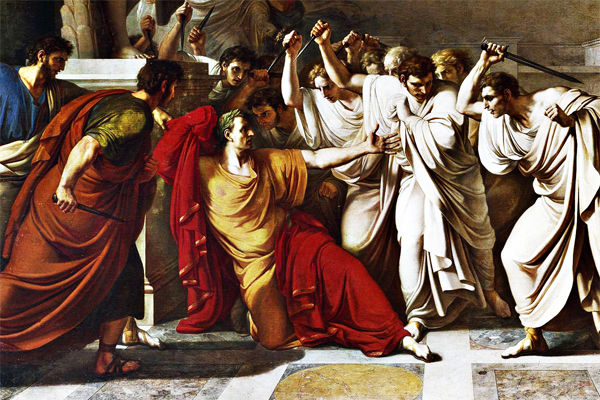
In 58 B.C., Caesar was given four Roman legions in Cisalpine Gaul and Illyricum, and during the next decade demonstrated brilliant military talents as he expanded the Roman Empire and his reputation. Among other achievements, Caesar conquered all of Gaul, made the first Roman inroads into Britain, and won devoted supporters in his legions. However, his successes also aroused Pompey’s jealousy, leading to the collapse of their political alliance in 53 B.C.
The Roman Senate supported Pompey and asked Caesar to give up his army, which he refused to do. In January 49 B.C., Caesar led his legions across the Rubicon River from Cisalpine Gaul to Italy, thus declaring war against Pompey and his forces. Caesar made early gains in the subsequent civil war, defeating Pompey’s army in Italy and Spain, but was later forced into retreat in Greece. In August 48 B.C., with Pompey in pursuit, Caesar paused near Pharsalus, setting up camp at a strategic location.
When Pompey’s senatorial forces fell upon Caesar’s smaller army, they were entirely routed, and Pompey fled to Egypt, where he was assassinated by an officer of the Egyptian king.
Caesar was subsequently appointed Roman consul and dictator, but before settling in Rome he traveled around the empire for several years and consolidated his rule. In 45 B.C., he returned to Rome and was made dictator for life. As sole Roman ruler, Caesar launched ambitious programs of reform within the empire. The most lasting of these was his establishment of the Julian calendar, which, with the exception of a slight modification and adjustment in the 16th century, remains in use today. He also planned new imperial expansions in central Europe and to the east.
In the midst of these vast designs, he was assassinated on March 15, 44 B.C., by a group of conspirators who believed that his death would lead to the restoration of the Roman Republic. However, the result of the “Ides of March” was to plunge Rome into a fresh round of civil wars, out of which Octavian, Caesar’s grand-nephew, would emerge as Augustus, the first Roman emperor, destroying the republic forever.
History Channel / Wikipedia / Encyclopedia Britannica / New World Encyclopedia.org /
Ancient History Encyclopedia.eu / Ancient Rome Live.org / National Geographic.org /
The Ides of March - Assassination of Julius Caesar on March 15, 44 BC (YouTube) 
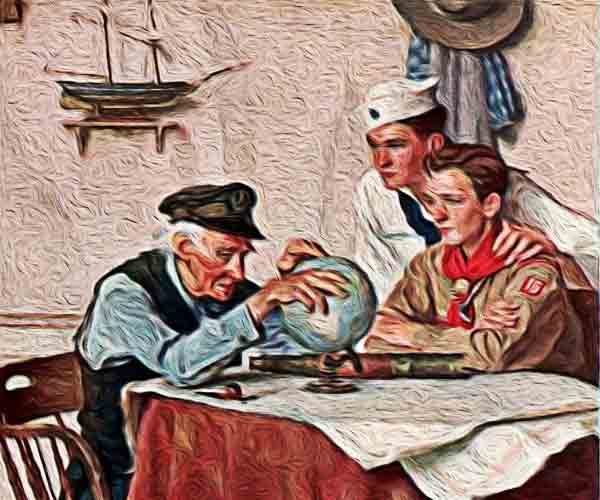
Understanding Military Terminology
Reception
(DOD)
1. All ground arrangements connected with the delivery and disposition of air or sea drops.
2. Arrangements to welcome and provide secure quarters or transportation for defectors, escapees, evaders, or incoming agents.
3. The process of receiving, offloading, marshalling, accounting for, and transporting of personnel, equipment, and materiel from the strategic and/or intratheater deployment phase to a sea, air, or surface transportation point of debarkation to the marshalling area.
Joint Publications (JP 3-35) Deployment and Redeployment Operations
Recognition
(DOD)
1. The determination by any means of the individuality of persons, or of objects such as aircraft, ships, or tanks, or of phenomena such as communicationselectronics patterns.
2. In ground combat operations, the determination that an object is similar within a category of something already known.
Joint Publications (JP 3-01) Countering Air and Missile Threats
Recognition Signal
(DOD) Any prearranged signal by which individuals or units may identify each other.
Joint Publications (3-50) Personnel Recovery
Reconnaissance
(DOD) A mission undertaken to obtain, by visual observation or other detection methods, information about the activities and resources of an enemy or adversary, or to secure data concerning the meteorological, hydrographic, or geographic characteristics of a particular area.
Also called RECON.
Joint Publications (JP 2-0) Joint Intelligence
Joint Publication - Department of Defense Dictionary of Military and Associated Terms
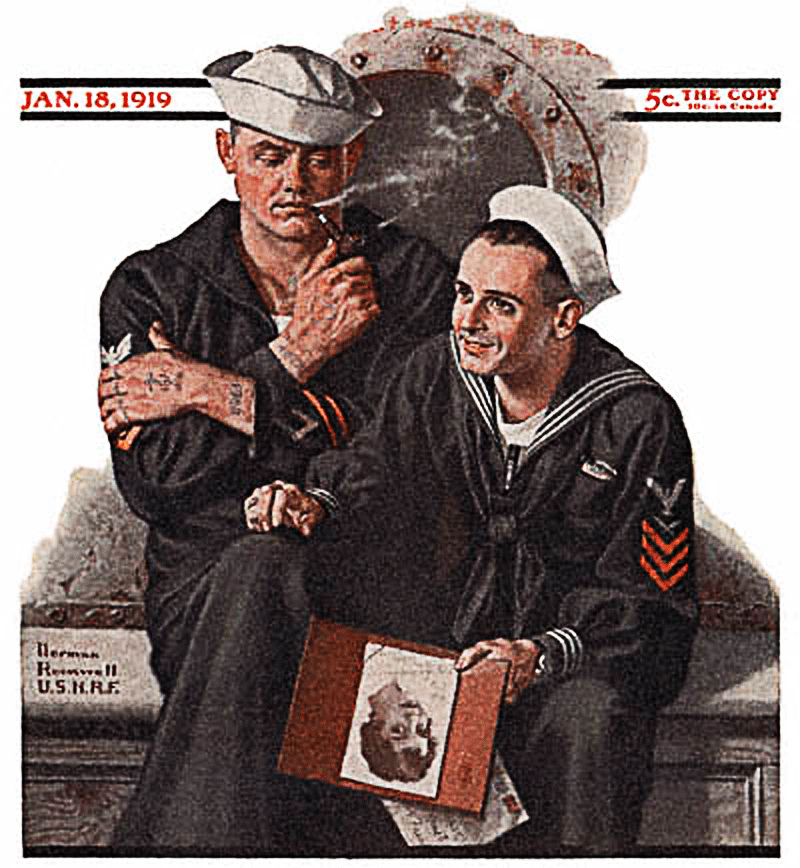
The Old Salt’s Corner
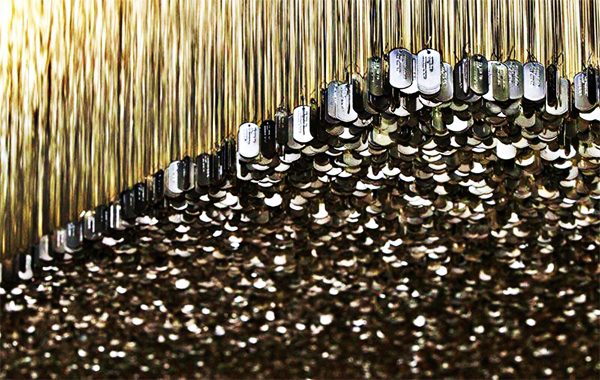
Captain Richard W. Wooley
Quartermaster Professional Bulletin-December 1988
Note: At the time this article was written the term Graves Registration was used for what is now call Mortuary Affairs.
Arlington National Cemetery is not the only resting place for “Unknown Soldiers”. Countless American soldiers have died defending their way of life throughout the history of this nation; many of their graves are marked with a single word, “unknown”.
The Civil War provided the first recorded incident of American soldiers making an effort to ensure that their identities would be known should they die on the battlefield. Their methods were varied, and all were taken on a soldier's own initiative. In 1863, prior to the battle of Mine's Run in northern Virginia, General Meade's troops wrote their names and unit designations on paper tags and pinned them to their clothing. Many soldiers took great care to mark all their personal belongings. Some troops fashioned their own “ID” (identification) tags out of pieces of wood, boring a hole in one end so that they could be worn on a string around the neck.
The commercial sector saw the demand for an identification method and provided products. Harper's Weekly Magazine advertised “Soldier's Pins” which could be mail ordered. Made of silver or gold, these pins were inscribed with an individual's name and unit designation. Private vendors who followed troops also offered ornate identification disks for sale just prior to battles. Still, despite the fact that fear of being listed among the unknowns was a real concern among the rank and file, no reference to an official issue of identification tags by the Federal Government exists. (42% of the Civil War dead remain unidentified.)
The first official advocacy of issuing identification tags took place in 1899. Chaplain Charles C. Pierce, who was tasked to establish the Quartermaster Office of Identification in the Philippines, recommended inclusion of an “identity disc” in the combat field kit as the answer to the need for standard identification. The Army Regulations of 1913 made identification tags mandatory, and by 1917, all combat soldiers wore aluminum discs on chains around their necks. By World War II, the circular disc was replaced by the oblong shape familiar to us today, generally referred to as “dog tags”.
Since then, some myths have arisen in connection with the purpose of the identification tags. One of the more common myths involves the reason for the notch on the tag issued between 1941 and the early 1970's. Battlefield rumor held that the notched end of the tag was placed between the front teeth of battlefield casualties to hold the jaws in place. No official record of American soldiers being issued these instructions exists; the only purpose of "the notch" was to hold the blank tag in place on the embossing machine. The machine used at this time doesn't require a notch to hold the blank in place, hence, today's tags are smooth on all sides.
The sole purpose of the identification tag is stated by its designation. Tags found around the neck of a casualty, and only those tags found around the neck, stay with the remains at all times tags found any place besides around the neck are made note of in the Record of Personal Effects of Deceased Personnel, and placed in an effects bag.
They are not removed unless there is a need to temporarily inter the remains. If there is only one tag present, another is made to match the first. If the remains are unidentified, two tags marked “unidentified” are made. One tag is interred with the individual, the other placed on a wire ring in the sequence of the temporary cemetery plot.
This enables Graves Registration personnel to make positive identification of remains during disinterment procedures; when the remains are disinterred, the tag on the wire ring is removed and placed with the matching tag around the neck.
The Department of the Army has developed and is currently testing a new tag, which will hold 80% of a soldier's medical and dental data on a microchip. Known as the Individually Carried Record, it is not intended to replace the present tag, but rather to augment it as part of the “paperless battlefield” concept. This development is in keeping with the Army's dedication to positively identify each and every fallen soldier.
The Armed Forces make every possible effort to eradicate discrepancies and remove doubts about casualties, not least those doubts that families may hold concerning the demise of their loved ones.
In recent years, a near perfect record of identifying service members who have died in the line of duty has been achieved, a far cry from the 58% rate of identification that stood during the Civil War.
The ID tag has, been and remains a major part of the reason for this record.
Are you wearing your ID tags today?
Too many military personnel, particularly those who are part of the peacetime force stationed in CONUS (Continental United States), forget how vital those tags can be, forget that as soldiers they are always on the line.
Wearing your ID tags is one of the easiest actions you can make towards achieving total readiness, so take those tags out of your dresser and put them around your neck.
Remember - the simple information contained on that small aluminum tag can speak for you if you can't speak for yourself; it could mean the difference between a positive identification and an uncertain future for those who survive you, should your identity be “...known only to God.”
~ U.S. Army Quartermaster Foundation - Fort Lee, Virginia

“I’m Just Sayin”
“It is a wise father that knows his own child.”
“It is not in the stars to hold our destiny but in ourselves.”
“There is nothing either good or bad but thinking makes it so.”
“No legacy is so rich as honesty.”
“Though she be but little, she is fierce.”
“Suspicion always haunts the guilty mind.”
“A fool thinks himself to be wise,
but a wise man knows himself to be a fool.”
“God has given you one face,
and you make yourself another.”
“Love all,
trust a few,
do wrong to none.”
“Some are born great,
some achieve greatness,
and some have greatness thrust upon them.”
“All the world's a stage,
and all the men and women merely players:
they have their exits and their entrances;
and one man in his time plays many parts,
his acts being seven ages.”
~ William Shakespeare

“Thought for the Day”
“There is no great genius without some touch of madness.”
“A friend to all is a friend to none.”
“Love is composed of a single soul inhabiting two bodies.”
“Quality is not an act, it is a habit.”
“The roots of education are bitter, but the fruit is sweet.”
“The law is reason, free from passion.”
“Those that know, do.
Those that understand, teach.”
“At his best,
man is the noblest of all animals
separated from law and justice he is the worst.”
~ Aristotle

“What I Learned”
“Those who can make you believe absurdities can make you commit atrocities.”
“Common sense is not so common.”
“It is difficult to free fools from the chains they revere.”
“Judge a man by his questions rather than his answers.”
“Every man is guilty of all the good he did not do.”
“The art of medicine consists in amusing the patient while nature cures the disease.”
“No problem can withstand the assault of sustained thinking.”
“God gave us the gift of life;
it is up to us to give ourselves the gift of living well.”
“Doubt is not a pleasant condition,
but certainty is absurd.”
“If God did not exist,
it would be necessary to invent Him.”
“We must cultivate our own garden.
When man was put in the garden of Eden he was put there so that he should work,
which proves that man was not born to rest.”
“Life is thickly sown with thorns,
and I know no other remedy than to pass quickly through them.
The longer we dwell on our misfortunes,
the greater is their power to harm us.”
~ Voltaire
 Mr. Answer Man Please Tell Us:Why Does Your Dog Follows You Everywhere?
Mr. Answer Man Please Tell Us:Why Does Your Dog Follows You Everywhere?
The answer has to do with your dog’s animal instinct and pack mentality. Canine companions that exhibit this type of behavior are often referred to as “Velcro dogs” because of their desire to be attached to your side. “Dogs are pack animals, and we are their pack”, says Sally Morgan, an author and holistic physical therapist for pets and people.
Because dogs respond to their owners’ behavior, it’s important to examine your relationship with your canine. For example, if your dog sleeps in your bed, you might be creating a dependency and reinforcing his need to be close to you at all times. In households consisting of multiple people, there’s a good chance your dog will become fixated on one person in particular. Sometimes it’s the primary caregiver who provides food and walks or the fun-time human who plays tug of war, a game of catch, or hands out endless amounts of treats.
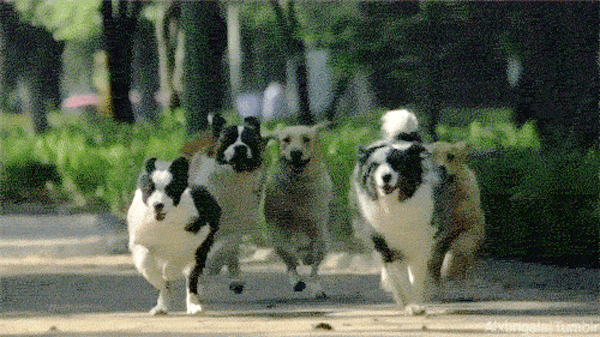
Most experts agree on a few different reasons why some dogs are clingy around their owners. One is their pack mentality. Dogs may have been domesticated thousands of years ago, but they still consider themselves to be part of a group like their wild ancestors. When there are no other dogs around, their human family becomes their pack. According to Reader's Digest, this genetic instinct is also what motivates dogs to watch you closely and seek out your physical touch.
A second reason for the behavior has to do with the bond between you and your pet. As veterinarian Dr. Rachel Barrack told the American Kennel Club, puppies as old as 6 months can imprint on their human owners like they would their own mothers. Even older dogs will bond with the humans in their lives who show them care and affection. In these cases, a dog will shadow its owner because it sees them as an object of trust and security.
A third possible explanation for why your dog follows you has more to do with your treatment of them than their natural instincts. A popular training tactic is positive reinforcement - i.e. rewarding a dog with treats, pets, and praise when they perform positive behaviors. The point is to help your dog associate good behaviors with rewards, but after a while, they may start to associate your presence with rewards as well. That means if your dog is following you, they may be looking for treats or attention.
Indeed, the science behind the companionship between humans and dogs is varied and vast. In fact,
“Research has confirmed that … the modern dog is actually better at understanding humans than even our most closely related primates.”
Pet Med / Mental Floss / Wikipedia / Encyclopedia Britannica /
I Heart Dogs / Quora / AKC.org / History Channel /
Why Does Your Dog Follows You Everywhere? (YouTube) 
 Mr. Answer Man Please Tell Us: What Cat's Body Language Is Saying
Mr. Answer Man Please Tell Us: What Cat's Body Language Is Saying
Cats use a variety of signals (body postures, facial expressions, and vocalizations) to convey their message and avoid unwelcome confrontations.
By learning how to decipher these feline postures, you can deepen the bonds of affection with your cats as well as prevent misunderstandings and potential aggression.
But for many of us, cat lingo feels like a foreign language, difficult to understand and still harder to decipher. Here, animal behaviorists help us interpret kitty’s cues and vocalizations.
1. Tummy Display
Feline body language is more nuanced than that of dogs, says Karen Sueda, DVM, Diplomate of the American College of Veterinary Behaviorists. “Part of the problem arises when people take their knowledge of dogs and apply it to cats”, says Sueda.
Have you ever wondered, for example, why your cat’s seemingly flirtatious behavior of rolling over to expose its belly may be met with overt aggression when you try to stroke it?
When your cat is content and relaxed, she may stretch out and roll over. But in other situations, when a cat feels cornered and cannot escape, this pose - followed by fully extended claws and sharp teeth - may be highly defensive, indicating that she is prepared to fight, says Pam Johnson-Bennett, a Certified Animal Behavior Consultant in Nashville, Tenn.
As with other feline-human interactions, it is important to learn what your cat prefers
2. The Fluttering Blink
When a cat greets another cat or a person with slow, languid blinks, it's communicating affection.When a cat greets another cat or a person with slow, languid blinks, it's communicating affection.
Why? Because in the feline world, closing one’s eyes in the presence of another is the ultimate sign of trust.
By blinking slowly at your cat, you are communicating that you are aware of its presence and pose no threat. So the next time your cat blinks at you, try returning the gesture.
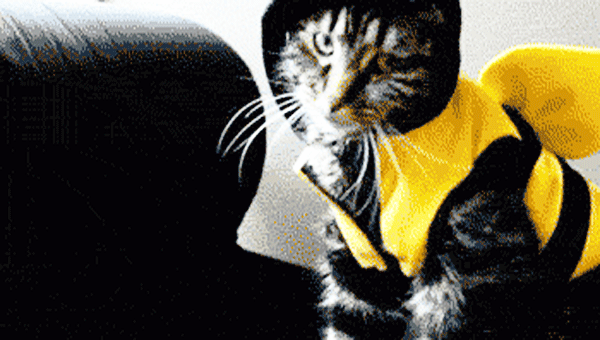
3. Classic Halloween Pose
One of the most accurate barometers of a cat’s mood is its tail.
When held high, it communicates confidence. Curled around another cat’s tail or human legs, it signals friendliness. And tucked below or between the legs, it signals insecurity or anxiousness.
The upright bottle-brush tail is an unequivocal sign that your cat is feeling threatened. And when combined with the arched back, upright hair along the spine, and unsheathed claws, the stance is a dead giveaway that you should back off, Sueda says.
4. The Direct Stare
Although people can use direct eye contact to show affection, most cats find it threatening. That's why in social settings, a cat usually gravitates toward the one person in the room who is trying to ignore it.
The more fearful a cat becomes, the wider its pupils expand, says Myrna Milani, DVM, an animal behaviorist at Tipping Point Animal Behavior Consulting Services in Charlestown, N.H.
When dilated, the pupils take in as much visual information as possible. This bug-eyed, saucer look signals that a cat is very frightened and wants to retreat.
In an aroused or angry cat, the pupils may become narrowed or constricted to focus more effectively on detail. But cats’ eyes also respond to ambient lighting, Sueda says, so it's important to observe the body language as a whole and not single out any one element.
Once a cat realizes that he is being watched, he may stop what he is doing and assess the situation.
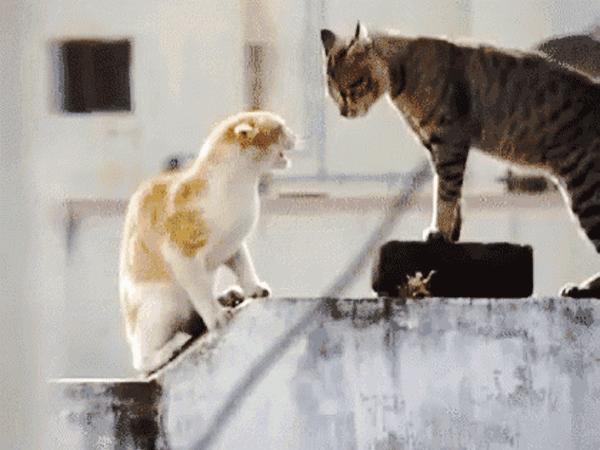
5. I'm Going to Get You
Even the most mild-mannered cat may retaliate if feeling threatened or aroused by too much play or petting. "Cats are stimulus-driven predators by nature," Milani says.
So when they see something move (whether a mouse, cat toy, or human hand), they are hardwired to pursue it.
Closer and closer, they inch forward until they reach arousal threshold. Then they pounce and kill.
If the prey happens to be your hand, the wisest thing to do, Milani says, is to freeze. That stop-action will interrupt this inbred stalking pattern.
When you see these telltale warning signs: dilated pupils, low twitching tail, and flattened ears, your cat is telling you, in the only way it can, to back off.
“That is not a time to get in its face and do ‘the nice kitty’ thing”, Milani says. “And don’t add to the problem by stroking it, especially if the cat is in defensive mode.”
6. Audio Cues
Cats may have adapted their meows to manipulate people in order to get their needs met.
Cats don’t do much meowing to other cats”, says Sueda, calling meows “an attention-getting device” to express greetings, approval, demands for food, and more.
Learn the nuances of your cat’s vocabulary so you can detect the difference between a plea for dinner and an urgent cry for help. For instance:
• Purring usually signals contentment and may also be a comfort-seeking behavior when the cat is recovering from illness or close to death.
• High-pitched gurgling or chatting indicates friendliness.
• Growling, hissing, or spitting are emphatic warnings to stay away - at least until the cat has calmed down.
• Caterwauling is a very loud, guttural sound that cats (especially males that have not been neutered) make when threatened by other cats. This sound is common in deaf cats.
Still, every cat is unique.
“I always tell clients that nobody knows your cat better than you do”, Milani says.
WebMD / Wikipedia / Encyclopedia Britannica /
Tuft and Paw / Cats.org / Humane Society.org / Resources.Best Friends.org /
What Cat's Body Language Is Saying (YouTube) 

NAVSPEAK aka U.S. Navy Slang
Trident: Special Warfare Insignia earned by Navy SEALS. See “Budweiser”. Also the name of the current submarine-launched nuclear missile and its systems.
Trons: Those in the AT Rate, primarily O Level, who work in Navy avionics.
Tronchaser: Those in the AT (primarily I Level) rate who work on Navy avionics.
TSC: Tactical Support Center, shore-based briefing/debriefing/analysis and operational control center for VP (patrol aviation) missions. See also ASWOC.
Tube steak: Hot dogs (also, called “Dangling Sirloin“”).
An E-7 HT is an HTC, “Head Turd Chaser”.
Turkey: Slang for the F-14 Tomcat.
Turn-to: Get to work.
Wiktionary.org

Just for you MARINE
Trooper: Soldier, considered a grievous insult to refer to a Marine unless plural.
TS Chit: A “Tough Shit” Chit is a (fictitious) small card, to be punched by a senior person upon hearing a high-grade TS (very sad) story. When completely punched around the edge, the bearer is entitled to a half hour with the chaplain. “That story is so sad I'll punch your TS Chit twice.”
Wikipedia.org
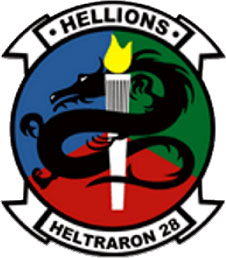
Naval Aviation Squadron Nicknames
HT-28 Helicopter Training (HT) Squadron TWO EIGHT - nicknamed the “Hellions”
United States Navy - Marine Corps Commander, Helicopter Training Air Wing FIVE - Naval Air Station Milton, Florida. / HT-28: November 1, 2006 - present
Wikipedia.org

Where Did That Saying Come From?
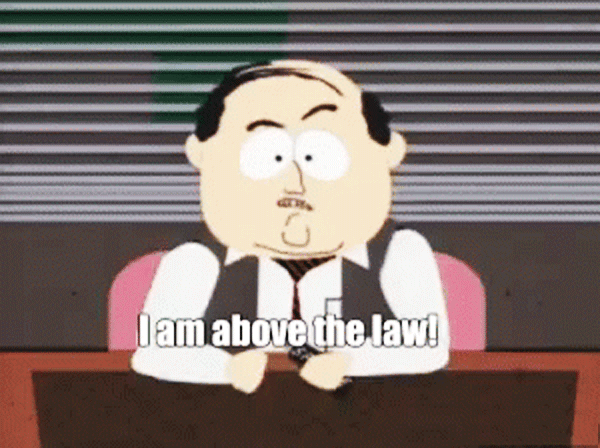
“A man who is his own lawyer has a fool for his client:”
Meaning: Literal meaning.
History: This proverb is based on the opinion, probably first expressed by a lawyer, that self-representation in court is likely to end badly.
As with many proverbs, it is difficult to determine a precise origin but this expression first began appearing in print in the early 19th century.
An early example comes in “The flowers of wit, or a choice collection of bon mots”, by Henry Kett, 1814:
...observed the eminent lawyer, “I hesitate not to pronounce, that every man who is his own lawyer, has a fool for a client.”
Phrases.org.uk

Science & Technology
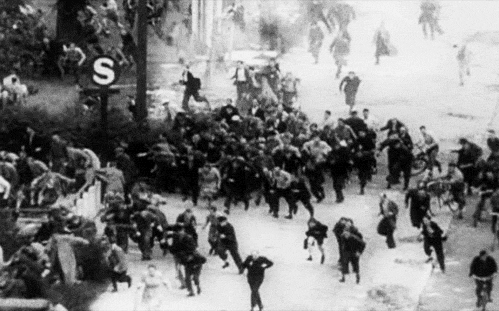
FEATURED: Predicting a riot: Social inequality leads to vandalism in experiments
• Children's dislike of cauliflower, broccoli could be written in their microbiome
'Black widow' pulsar detected in globular cluster NGC 6712
• Hoverflies navigate using sun and body clock
• How proteins help yeast adapt to changing conditions
Scores of internet-providing satellites will soon streak across Canada's skies, but at what cost?
• A robot vision system that diminishes occlusions using mirror reflections
• Ketone 2-heptanone reduces inhibitory control of the amygdala in the mouse brain
Maritime rope could be adding billions of microplastics to the ocean every year
• Llama antibodies have 'significant potential' as potent COVID-19 treatment
• Researchers study recurrent neural network structure in the brain
Phys.org / MedicalXpress / TechXplore

“Jumping gene” may have erased tails in humans and other apes—and boosted our risk of birth defects
• A new fleet of Moon landers will set sail next year, backed by private companies
A huge forest experiment aims to reduce wildfires. Can it unite loggers and environmentalists?
• Milk fueled Bronze Age expansion of “eastern cowboys” into Europes
SARS-like viruses may jump from animals to people hundreds of thousands of times a year
• Study of up to 40,000 people will probe mysteries of Long Covid
Antiaging advice from single-celled creatures: Build better proteins
• Can “zero COVID” countries continue to keep the virus at bay once they reopen?
Science AAAS

Bizarre News (we couldn’t make up stuff this good - real news story)
Why is alcohol used to preserve things?

What happens if you put in too much?
I've you've ever visited a laboratory or museum and admired a pristine eyeball or a tiny deceased critter floating in a glass jar, you've seen the preservation power of alcohol.
The formal name of this technique is fluid preservation.
Scientists have been relying on it since the 1600s to preserve their curious specimens. And, if done correctly, it can sustain a sample for hundreds of years, according to the American Museum of Natural History.
But, how does it work?
“The long and the short of it is that it's toxic to the kinds of microorganisms that would cause decay&rldquo;, Bill Carroll, an adjunct professor of chemistry at Indiana University Bloomington, told Live Science.
He used wine as an example. It's made as yeast eats sugar from grapes and then excretes alcohol. But the yeast excrete so much alcohol that the concentration becomes toxic and kills the yeast, he said.
And that alcohol content - around 14% - helps delay the growth of bacteria for years (many wines also contain additional preservatives like sulfur), according to the California Wine Advisor.
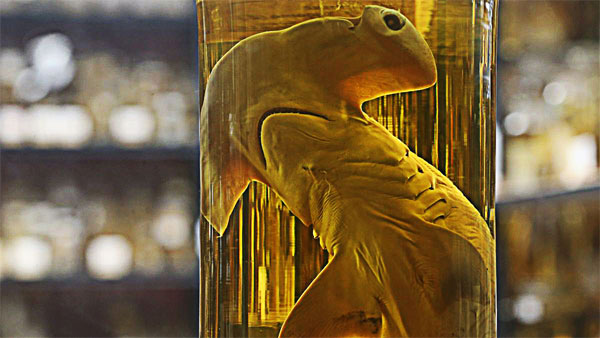
Preserving other organic material - such as DNA, tissues or even entire animals — requires a higher alcohol concentration, said Katherine Maslenikov, the fish collections manager at the Burke Museum in Seattle. Maslenikov typically relies on alcohol, specifically ethanol, for long-term storage.
For example, Maslenikov might take a fish specimen, remove some tissue samples for DNA analysis and inject the fish with formalin (a solution of formaldehyde gas dissolved in water) to stop the internal biological processes, such as enzymatic reactions and tissue degradation. Then, she might immerse the fish specimen in a jar of 70% alcohol, 30% water.
For long-term storage, "70% seems to be that magic number," Maslenikov said. There's enough water in the solution that the tissues will stay hydrated, which helps the animal or specimen hold its shape, and there's enough alcohol to prevent mold and bacterial growth, she said.
Alcohol at even higher concentrations, for instance 95% ethanol, works as a dehydrant, meaning it removes and replaces the water in the cell, tissue or whole-body specimen with alcohol.
The lack of water causes changes to water-sensitive proteins; they unfold, or denature, and harden in place next to one another, fixing the specimen's shape, according to Ask a Biologist, a series run by Arkansas State University.
This technique is a common way of preserving DNA, according to a 2013 study in the journal PLOS One.

It can be tricky deciding what percentage of alcohol to use. Using too much or too little can affect the sample's shape and flexibility, or even lower its ability to preserve the sample in the solution.
High concentrations of alcohol used to dehydrate a specimen will preserve it. But Maslenikov said this process can also leave a specimen shriveled (from the loss of water) and brittle (from the hardened proteins). Sometimes that's OK; it all depends on what you are trying to preserve.
Meanwhile, a specimen might deteriorate quickly if it retains too much water.
“If an organism has enough water in its tissues, it can dilute the alcohol," Christopher Rogers, an associate research professor at the Kansas Biological Survey and Center for Ecological Research at the University of Kansas, told Live Science in an email. If this happens, the alcohol concentration might not be potent enough to kill lurking microorganisms that might be harbored deeper in the specimen, somewhere like the gut of a whole-animal specimen.&rldquo;
“Those missed bacteria can decompose the specimen. "This is why it is important to change the alcohol [about] 24 hours after pickling the critter&rldquo;, because it boosts the solution's alcohol concentration, Rogers said.
When it comes to using alcohol as a preservative, Carrol said you're looking for a concentration sweet spot:
“A concentration such that you inhibit microorganisms, but not destroy the cell structure of what you're looking at.&rldquo;
Related: Does salt make water boil faster?
Is it safe to drink moonshine?
Does drinking alcohol warm your body?
Why does OJ taste bad after you brush your teeth?
Live Science (09/15/2021) 


SONG FACTS
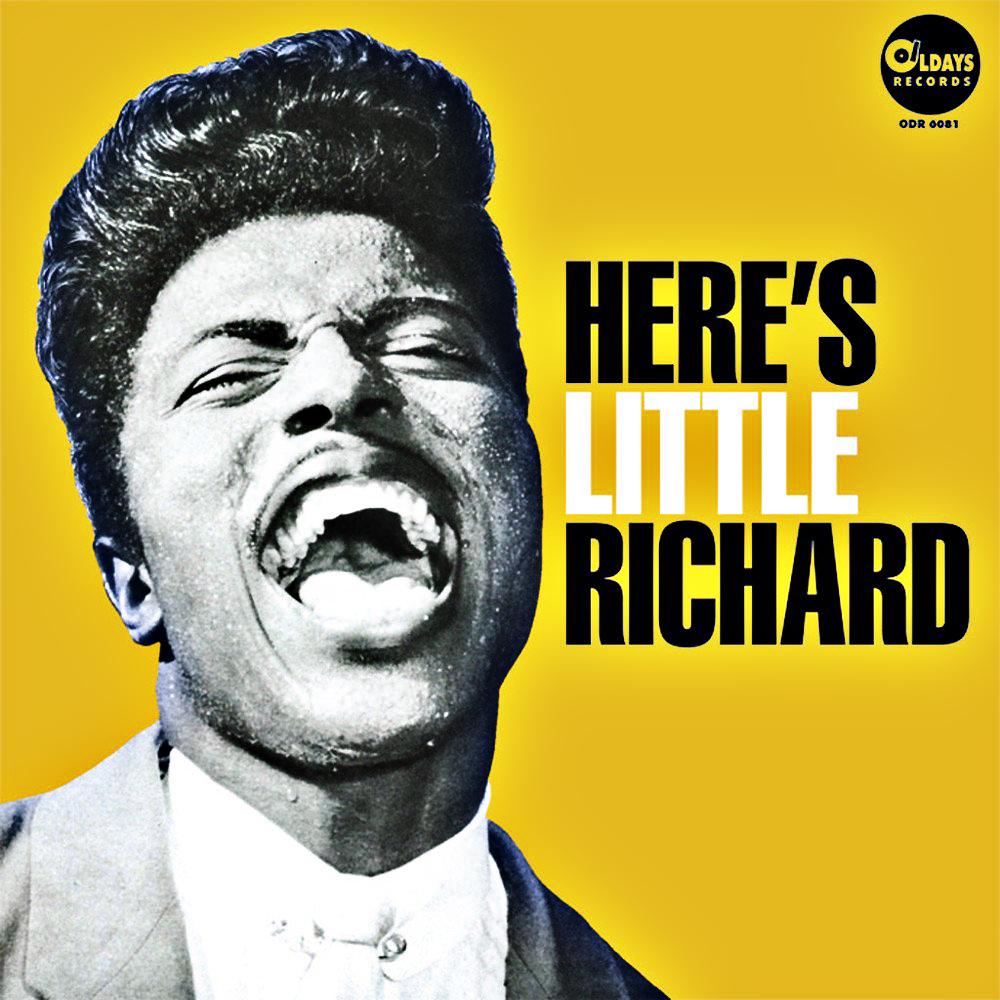
“Tutti-Frutti”  - Little Richard
- Little Richard
Album: Here's Little Richard
Released 1955 
Little Richard wrote
“Tutti-Frutti”  in 1955 when he was working as a dishwasher at a Greyhound bus station in his hometown of Macon, Georgia.
in 1955 when he was working as a dishwasher at a Greyhound bus station in his hometown of Macon, Georgia.
Explaining how he came up with the song, he told Rolling Stone:
“I couldn't talk back to my boss man. He would bring all these pots back for me to wash, and one day I said, 'I've got to do something to stop this man bringing back all these pots to me to wash,' and I said, 'Awap bop a lup bop a wop bam boom, take 'em out!' and that's what I meant at the time. And so I wrote 'Tutti Frutti' in the kitchen, I wrote 'Good Golly Miss Molly' in the kitchen, I wrote 'Long Tall Sally' in that kitchen.”
Richard says that “Awap bop a lup bop a wop bam boom” was kind of his catch phrase, something he would reply to folks who asked him how he was doing.
Long before Richard recorded this, he performed it at his shows as “Tutti Frutti, Good Booty”. It was a very raucous and sexual song and was considered too suggestive for white audiences, so it was cleaned up considerably when he recorded it for Specialty Records. The chorus was changed to “Tutti Frutti, aw Rudi”, and these original lyrics were replaced:
“If it's tight, it's alright
If it's greasy, it makes it easy”
Some sources have claimed that Richard also sang “A good God damn” instead of “a wop bam boom”, but according to the notes in the 2012 reissue of the album, Richard (who later became a minister) never took the Lord's name in vain and never sang that lyric.
This was Little Richard's first hit, but his success was far from instant. His first recordings were in 1952 for RCA Records, and were failures. He moved to Peacock Records the next year and released some singles with the Johnny Otis Trio backing him up. His break came when the singer Lloyd Price played a show in Macon, Georgia, and Richard, who was selling drinks at the gig, went to the dressing room and played Price “Tutti Frutti” on the piano.
Price encouraged Richard to send a tape to Specialty Records, so he sent them a demo of two songs he recorded in February 1955 with his group The Upsetters:
“Baby” and
“All Night Long”. Specialty owner Art Rupe was unimpressed, but Richard kept calling and sending letters.
His persistence paid off and Rupe finally sent his producer Bumps Blackwell to New Orleans, where on September 13 and 14, they recorded the nine songs that would comprise the Here's Little Richard album. "Tutti Frutti" was released as a single and became a breakout hit, which Richard found out when the record company called him in Georgia to explain. They flew him to Hollywood and had him record follow-up singles
“Long Tall Sally” and
“Slippin' and Slidin'”.
This was the last song recorded for the album, and it barely made it. The first eight tracks Richard put down were blues numbers which weren't wowing his producer Bumps Blackwell, who took a break and brought Richard to a local bar called the Dew Drop Inn. Richard, feeling more relaxed with an audience to play for, sat down at a piano in the bar and started playing his live favorite
“Tutti Frutti”. This got Blackwell's attention, and he insisted that Richard record the song.
Of course, the original racy lyrics about “good booty” had to be replaced, and Little Richard had no particular talent for writing words that would match his melody yet mollify a white audience. This task fell to Dorothy LaBostrie, who Blackwell described as “a girl who kept hanging around the studio to sell songs”.
She was on hand because Richard recorded her song “I'm Just A Lonely Guy” earlier that day.
With time running out in the session, an embarrassed Richard sang her the raunchy lyrics, looking at the wall while he did so. LaBostrie left and came back with the sanitized lyrics with just 15 minutes of studio time remaining. They quickly recorded the song, getting it right on the third take with two minutes to spare. Dorothy LaBostrie earned what became a very lucrative writing credit for her efforts.
“Tutti-Frutti”  introduced Little Richard's famous “Whooooo”, and also a big “Aaaaaaahhh” scream which he sings just before the tenor sax solo performed by Lee Allen. Richard's scream had a practical purpose: to let Allen know when to start playing. They were recording on just three tracks, so overdubbing the horns wasn't a practical option.
introduced Little Richard's famous “Whooooo”, and also a big “Aaaaaaahhh” scream which he sings just before the tenor sax solo performed by Lee Allen. Richard's scream had a practical purpose: to let Allen know when to start playing. They were recording on just three tracks, so overdubbing the horns wasn't a practical option.
You can also hear Richard's classic line in this song, “A wop bop a lu bop, a wop bam boom!” He felt you could express your emotions without singing actual words. He would also put a little something extra into the words he sang, which he called “that thing”. It was something he learned playing piano and singing in church, and it was a style that would influence the next generation of rock music.
This is one of the most famous songs of all time, making #43 on Rolling Stone magazine's list of the 500 Greatest Songs, but it was not a huge hit, going to #2 on the R&B charts and reaching just #17 on the Hot 100.
Pat Boone fared better with his 1956 cover, taking it to #12. Boone had a long career doing sanitized covers of songs by black artists, and he also covered Richard's
"Long Tall Sally”.
Many listeners at the time only knew the song through Boone, so Little Richard's promotional materials often labeled him “Original 'Tutti Frutti' Man”.
Boone changed some of the lyrics, so “Boy you don't know what she's doing to me” became “Pretty little Susie is the girl for me”.
“The kids didn't care - they didn't know”, he said in a Songfacts interview. Boone went on to explain that Little Richard was grateful for the exposure, as he introduced the song to a white audience.
Like
“Long Tall Sally”, this song was covered by Elvis. Little Richard once said, “Elvis may be the King of Rock and Roll, but I am the Queen”.
Little Richard did not invent the name “Tutti Frutti”; it was a popular flavor of ice cream. The phrase is Italian for “All Fruits”, and the ice cream had little bits of candied fruit mixed in. In 1938, the Jazz duo Slim Gaillard and Slam Stewart, who recorded as Slim And Slam, released a popular song called “Tutti Frutti”, which was about the ice cream. Little Richard's was a completely different song.
Little Richard recorded this at J&M Studios in New Orleans, which was the only place to record in the city for many years. Opened in the late '40s, Ray Charles, Sam Cooke and Jerry Lee Lewis recorded there as well. It has since become a laundromat.
Huey “Piano” Smith played the piano on the first eight songs during the session that produced this album, but he didn't have time to learn “Tutti Frutti” so Richard played it himself.
The drummer on the session was Earl Palmer, who later moved to Los Angeles and became one of the most prolific drummers of all time, playing on songs by the Righteous Brothers, Elvis Costello, B.B. King and hundreds of others. On this song, Palmer had no rehearsal and Richard was pounding out a rock rhythm on the piano.
Palmer later explained,
“he only reason I started playing what they come to call a Rock and Roll beat was came from trying to match Richard's right hand - with Richard pounding the piano wih all ten fingers, you couldn't so very well go against that. I did at first - on 'Tutti Frutti you can hear me playing a shuffle. Listening to it now, it's easy to hear I should have been playing that rock beat.”
This song was a huge influence on many aspiring rock stars, but it had special significance for David Bowie, as it was the first rock song he heard. Bowie's father, who ran a London music hall, brought the record home when David was 9 years old. “My heart nearly burst with excitement”, said Bowie. “I had heard God”.
Little Richard told Mojo in 1999:
“My greatest achievement would have to be 'Tutti Frutti.' It took me out of the kitchen - I was a dishwasher at the Greyhound bus station, making $10 a week working 12 hours a day, and 'Tutti Frutti' was a blessin' and a lesson. I thank God for 'Tutti Frutti'.”
Buchanan & Goodman sampled this in their 1956 novelty hit, “The Flying Saucer”.
Charles Connor, Little Richard's drummer in the 1950s and 60s told Uncut magazine the rock 'n' roll star took his “Awap bop a lup bop a wop bam boom” catch phrase from his drums.
“Richard called me about a month and a half before he passed, and we talked for a long time”, Connor added. “He said, 'Charles, thanks for helping me create my style of singing.' He called us the architects of rock and roll, but I said I was the bricklayer, laying the foundation of the rhythm for him.”
On Queen's last tour with Freddie Mercury (in 1986), they included this song in their setlist along with another '50s favorite,
“Hello Mary Lou” by Ricky Nelson.
MORE SONGS
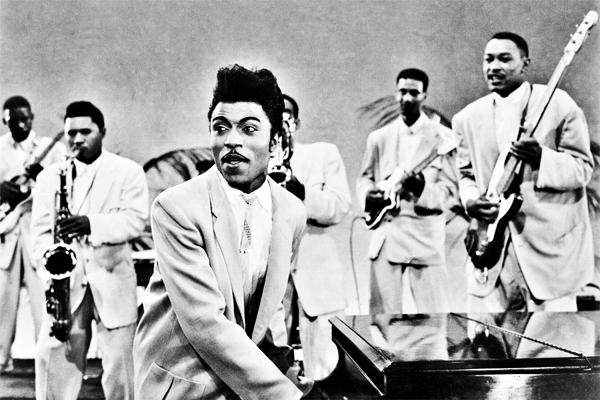
“Tutti-Frutti” (1955) 
“Long Tall Sally (The Thing)” (1956) 
“Rip It Up” (1956) 
“The Girl Can't Help It” (1956) 
“Slippin' and Slidin'” (1956) 
“Ready Teddy” (1956) 
“Heeby-Jeebies” (1956) 
“All Around the World” (1956) 
“Lucille” (1957) 
“Keep A-Knockin'” (1957) 
“Send Me Some Lovin'” (1957) 
“Jenny Jenny” (1957) 
“Good Golly, Miss Molly” (1958) 
“Ooh! My Soul” (1958) 
“Kansas City” (1959) 
“Hey Hey Hey Hey” (1959) 
“By the Light of the Silvery Moon” (1959) 
“Bama Lama Bama Loo” (1964) 
“I Don't Know What You've Got but It's Got Me” (1965) 
“I Need Love” (1967) 
“Freedom Blues” (1970) 
Little Richard official site (Little Richard Discography) / Rock & Roll Hall of Fame / Billboard / All Music / Song Facts /
Ultimate Classic Rock / Little Richard
Image: “Here's Little Richard (album)” by Little Richard

Trivia
● Who was the first honorary citizen of the U.S.?
Answer to Trivia
READ MORE: Senate.gov
● What military action was codenamed Operation Just Cause?
Answer to Trivia
READ MORE: ARMY.mil
● How many patents did Thomas Edison accumulate during his lifetime?
Answer to Trivia
READ MORE: History Channel
● Who wrote “The Power of Positive Thinking”, first published in 1952?
Answer to Trivia
READ MORE: TCNBC
● What safety-minded European automaker pioneered side airbags in the 1990’s?
Answer to Trivia
READ MORE: IIHS.org

A Test for People Who Know Everything
From the Jeopardy Archives Category - “THE 1950s” ($200)
“In 1955 Ray Kroc opened his first of these restaurants with a goal of 1,000 based in the U.S. only; Ray exceeded that goal.”
Answer to Jeopardy READ MORE: Encyclopedia Britannica
From the Jeopardy Archives Category - “THE 1950s” ($400)
“Here's an image from May 21, 1956 of the results of the first successful airborne drop of this type of bomb.”
Answer to Jeopardy READ MORE: History Channel
From the Jeopardy Archives Category - “THE 1950s” ($600)
“The intersection of California highways 46 & 41 is where this young actor met his end in 1955."”
Answer to Jeopardy READ MORE: History Channel
From the Jeopardy Archives Category - “THE 1950s” ($800)
“‘Labor has made a greater contribution to this country than any other single force’, he said on becoming Teamsters president.”
Answer to Jeopardy READ MORE: Encyclopedia Britannica
From the Jeopardy Archives Category - “THE 1950s” ($1,000)
“With U.N. approval, Truman put this general in charge of U.N. command forces on July 8, 1950; that didn't work out so well.”
Answer to Jeopardy READ MORE: History Channel

Joke of the Day

Old Man Visits His Doctor
This old man visits his doctor and after a thorough examination, the doctor tells him, “I have good news and bad news, what would you like to hear first?”
Patient: “Well, give me the bad news first.”
Doctor: “You have cancer, I estimate that you have about two years left.”
Patient: “That's terrible! In two years, my life will be over! What kind of good news could you probably tell me, after this?”
Doctor “You also have Alzheimer's. In about three months you are going to forget everything I told you.”





































